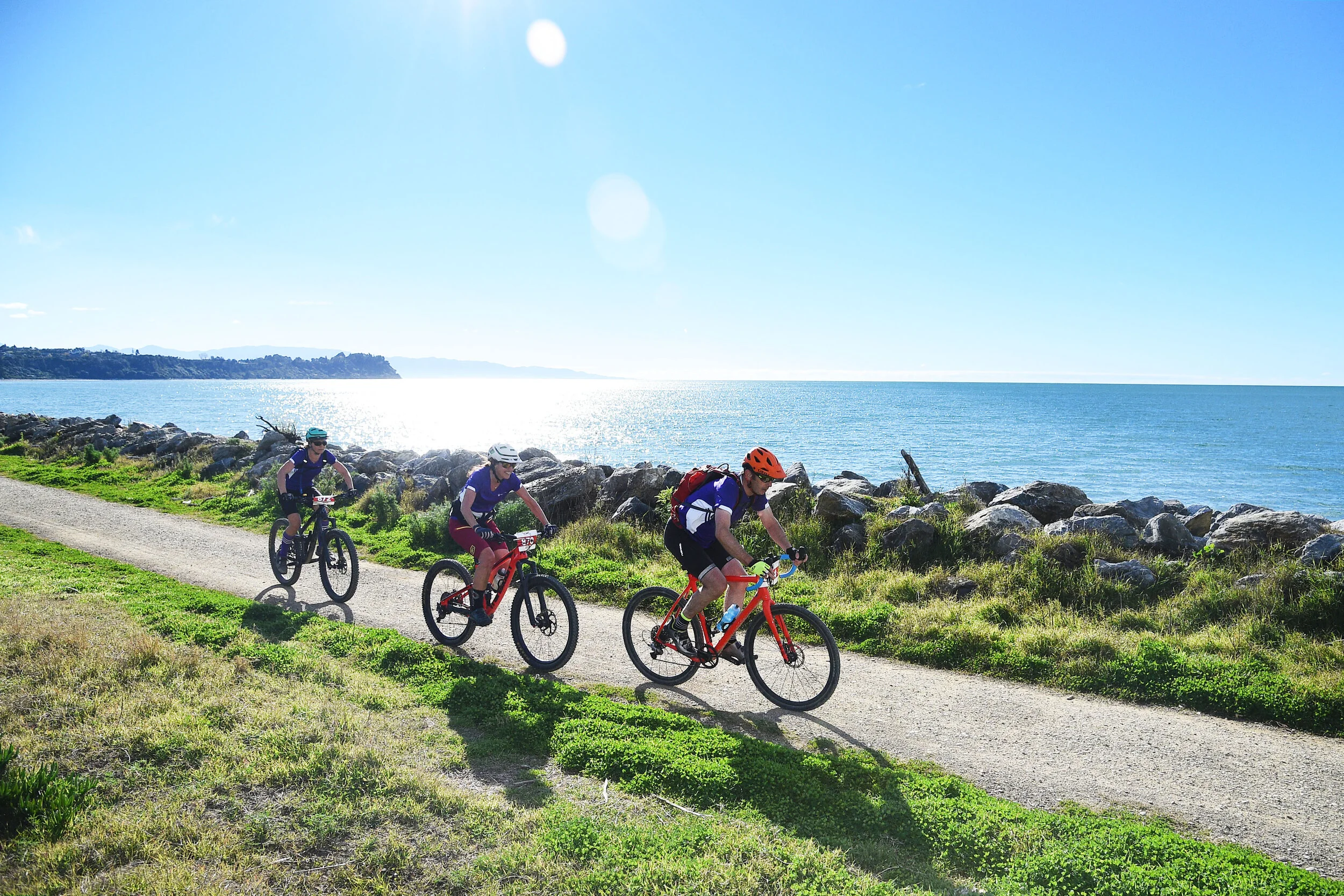In a first for airlines in the South Pacific, Air New Zealand is giving customers the freedom to use Bluetooth devices ‘gate to gate’ across its entire fleet.
Michael Meredith joins Peter Gordon as chef for Air New Zealand

Air New Zealand passengers will be enjoying fine dining meals designed by award-winning chef Michael Meredith as they quaff bubbles. Only if they're flying business s class, though.
As the airline's newest culinary consultant, the Samoa-born chef known for his degustation menus and adventurous approach will design dishes for 'Business Premier' passengers - Air New Zealand's executive class.

"It's a huge privilege to be given the chance to showcase my take on New Zealand cuisine to people from all over the world.
"There's a bit of pressure but I'm also really excited to see what we can do together," Meredith said.
Air New Zealand general manager customer experience Carrie Hurihanganui said Kiwi cuisine was renowned for its fresh, high quality and diverse produce - and its wine.
For many visitors to our country Air New Zealand offers their very first taste of New Zealand and we take this responsibility very seriously.
"Michael will bring a fresh perspective to the table.
"We've long held a farm to plane philosophy where menus are crafted around the best seasonal, fresh produce on offer. Michael has a similar ethos at Meredith's and we're excited to see how he translates his expertise from the restaurant to meals served at altitude".
Stuff
JOHN EDENS
Last updated 15:57, July 20 2016
Nelson Airport expands into Monaco
Singapore Airlines flies into new territory
 Singapore Airlines is counting down to going where no carrier has gone before.
Singapore Airlines is counting down to going where no carrier has gone before.
The airline will start its "Capital Express" service in September which will link Wellington, Canberra and Singapore four times a week.
It will be the first time the two Australasian cities have been linked by direct flights and the first ever international services out of Canberra.
Driving the project from New Zealand is Simon Turcotte who arrived as country general manager late last year.
"We've done our sums and we looked at it for many years. I think at this point of time the figures add up - it makes sense for us to do it and there's possibility to do it on a profitable basis and now is the time to make that investment and give it a go.'
The airline will use a 266-seat retrofitted Boeing 777-200 aircraft, with 38 business class seats and 228 economy class seats.
The 35-year-old - who studied finance at university - says the Capital Express is part of a strategy of investing heavily in New Zealand and Australia.
"As a network carrier we're always looking out for opportunities and studying options world wide - we see Southwest Pacific as a key part of our network," he said.
The airline established a joint venture with Air New Zealand in early 2015 which means double daily services between Auckland and Singapore. During summer it uses an Airbus A380 on the route to increase capacity. It also flies daily to Christchurch and when it starts its Wellington service it will be the first non-Tasman carrier to serve three New Zealand cities.

is still in talks with Air New Zealand about a possible code share arrangement out Wellington.
Turcotte said it was expected that much of the traffic would be northbound to Singapore and beyond but there were certain market segments - corporates, politicians diplomats - which would be interested in flying between Canberra and Wellington.
There was also scope to develop a market for leisure travellers and the airline was working with tourism authorities in the Australian capital.
In Wellington, Singapore Airlines was building a team of 11 staff.
We've definately maintained that first class service out of Auckland we still feel there's a market for that and we're keen to serve that.
Its performance is seen as an indicator of the health of Asia's airline industry and in May it reported its full-year profit grew 66 per cent to S$804 million (NZ$832 million) mainly because of lower oil prices. The airline did warn of challenging conditions ahead caused by weak economic activity and rapid increases in capacity across the industy, leading to lower fares.
Turcotte said competition was nothing new to his airline.
"Historically Singapore has been developed as a transportation hub - we've always faced competition in our home market.''
Singapore Airlines has stuck with first class cabins on many of its aircraft and that market was holding up, he said.
"We've definately maintained that first class service out of Auckland we still feel there's a market for that and we're keen to serve that," he said.
"If you look at the floor space on the aircraft that's dedicated to the front cabin it's been expanded year on year - the market is there.'
Turcotte said as a child he had wanted to be a pilot but took a different path and studied for a commercial career.
Simon Turcotte
• Singapore Airlines NZ general manager
• Age: 35
• Born in Montreal, Canada
• Has worked at Singapore Airlines for nine years including in revenue management at the airline's Singapore base and postings to India and most recently Spain where he was country general manager.
Tuesday, 05 July 2016
Grant Bradley
Aviation, tourism and energy writer for the Business Herald
Nelson Airport experiences record growth after busiest year ever
 Nelson Airport has experienced its busiest year ever with further growth predicted.
Nelson Airport has experienced its busiest year ever with further growth predicted.
A record 865,023 passengers flew in and out of the terminal in the year to June, up 16 per cent from the 750,000 passengers last year.
Airport chief executive Rob Evans said the growth was"extraordinary".
"Once you start talking in millions it is pretty significant numbers. Our personal target for next year is a million passengers."
The growth was also remarkable as it had all occurred in the six months from December when Jetstar started flying out of Nelson.
Evans said the increase was not solely due to Jetstar and other start-up airlines including Kiwi Regional Airlines (KRA) had also played a role.
KRA was probably contributed 25,000 passengers a year and was starting to make an impact, before folding last month, he said.
Jetstar's arrival had led to competition between it and Air New Zealand. The Nelson to Auckland route had grown by 25 per cent alone and the Wellington to Nelson route by 15 per cent.
"What we've been really pleased to see is that both airlines have been really successful through a very buoyant summer and shoulder season.
"It's demonstrated the opportunities for Nelson through the likes of Auckland and Wellington where the growth has been extraordinary."
There are now 480 flights in and out of Nelson a week.
The expansion in passenger numbers had also corresponded with an overall growth in domestic and international tourism.
Evans acknowledged the unprecedented growth in the last six months had put strain on airport infrastructure including the carpark.
Some interim changes to carparking were planned.
The airport would also be installing an extra exit barrier to help reduce congestion from people trying to get out of the carpark.
It would also be laying gravel on 200 overflow spaces on the grass to improve that area.
Long term improvements would be part of an "exciting" new terminal redevelopment he hoped to publicly announce in the next month or so.
Overall Evans said his small team had coped well to deal with the unplanned growth.
"Our business plan did not contain 30 per cent growth, so we've reacted really well. We've done really well and we have these exciting new infrastructure plans for the future."
He believed the growth at the airport was sustainable.
"It will always continue to grow because it is a popular destination with a high proportion of people who like to travel with a good tourism product with lots of opportunity to grow."
Owner of the Nelson branch of New Zealand Rentacar Terry Simpson said that his business turnover had increased by a third since the introduction of Jetstar, Kiwi Regional Airlines and Originair last year.
"We're seeing a lot more Kiwis coming to Nelson, especially at this time of year, from Auckland and Wellington - it seems to be rubbing off on the other restaurants and retailers in town too.
"To be fair Air New Zealand has been holding us to ransom for some time now," he said.
"There is definitely that (seasonal) difference but it's becoming busier on the whole and I have to put that down to Jetstar because they're bringing people here that wouldn't normally come to Nelson."
Uniquely Nelson manager Simon Duffy said the increase in airline passengers had been good for retailers and hospitality businesses in the CBD.
Tourism figures show the tourism spend for Nelson for the year to May was $295 million, up 9 per cent for the previous year.
In the Tasman region the tourism spend for the year to May was $263 million up 5 per cent.
- Stuff
SALLY KIDSON
Last updated 17:46, July 8 2016
AIR NZ: Wellingtons Runway is not the problem, lack of long haul passengers is
 OPINION: Air New Zealand celebrated a milestone last week when we landed a Boeing 787-9 Dreamliner at Wellington Airport.
OPINION: Air New Zealand celebrated a milestone last week when we landed a Boeing 787-9 Dreamliner at Wellington Airport.
Having the Dreamliner on the tarmac at Wellington prompted enquiries about whether we were trying to make a subtle point about the proposed Wellington Airport runway extension.
Our position on the runway extension isn't that subtle, it is very clear. The problem with flying long haul from Wellington isn't the length of the runway.
The problem is the size of the local travel market, there are simply not enough travellers from the Wellington region or even the lower North Island to sustain regular direct services to any of our long haul destinations; certainly not enough to justify the tremendous investment in infrastructure and the millions of dollars of on-going cost required to support them.
That is why – regardless of the length of the runway - we won't operate long haul services out of Wellington. The numbers just don't stack up relative to the costs involved in addressing the perceived problem.
Wellington has better air links to the world than it has ever had. It is close to two large, competitive aviation hubs and from September will have a new way to Singapore through Canberra on our alliance partner Singapore Airlines.
Air New Zealand is committed to supporting that service, but there is a good reason it's travelling via Canberra – Singapore Airlines knows the passenger flows out of Wellington can't sustain a direct service.
Despite the reticence expressed by ourselves and all other airlines, Wellington Airport is pushing ahead with its runway extension project.
The reason for this is simple. Even if no new services are attracted, and even if it is paid for from the public purse, the airport will be able to recover the cost of the runway extension through landing fees from existing users and airlines.
The airport will make money under any circumstance, while existing airlines and travellers will be forced to pay.
It's not for us to tell Wellingtonians how their rates should be spent. But, it is important to understand these dynamics to properly understand why the airport company is so keen, and airlines are so cautious, on the runway extension.
All the while, Air New Zealand continues to invest in Wellington. We work to promote Wellington as a visitor destination and we proudly support signature local events like WOW and Wellington on a Plate.
We will operate 150,000 more seats into Wellington this year and in September we will open a new regional lounge in the new-look Wellington terminal.
Air New Zealand remains committed to promoting Wellington as an excellent visitor destination and connecting it to the world.
Richard Thomson is Air New Zealand's general manager of networks.
*comments are closed
- Stuff
RICHARD THOMSON
Last updated 05:00, July 8 2016
Originair resumes flights to Palmerston North
 Nelson-based Originair will resume direct flights between Nelson and Palmerston North in September .
Nelson-based Originair will resume direct flights between Nelson and Palmerston North in September .
It will also operate some flights for the upcoming school holidays from July 15 and its charter services are available.
The fledging Nelson-based airline ceased flying on April 1, after launching in August last year.
Managing Director Robert Inglis said the disruption to the airlines' services was caused by the Civil Aviation Authority (CAA) placing a restriction on its Air Operator's Certificate.
"It has taken some time to transfer all our aircraft records from our previous operator to [new operator] Inflite." Originair's operator Air Freight NZ was unable to operate the company's flights in February as the CAA investigated reported safety concerns.
CAA official information officer Karl van der Plas said a report into those concerns was still being completed.
Inglis said the disruption to Originair's flights was disappointing but he was confident in the new arrangement with Inflite Charters.
One of Originair's jetstream aeroplanes is leased from the Auckland company.
"I have worked with that company for probably three decades at least so I'm very comfortable with that relationship."
The Nelson/Palmerston North service will initially focus on peak days each week before increasing services in-line with demand in the high season.
Inglis said industry shifts since Originair ceased flying - the introduction of Jetstar's Nelson routes and the sale of Kiwi Regional Airlines - necessitated some changes.
Kiwi Regional Airlines was folded into Air Chathams last month after it struggled to cope a drop in business over winter with only one aircraft, owner Ewan Wilson said.
Inglis said Originair workers had moved to Jetstar since April and a new Originair staff would be employed by Aerocare NZ.
Asked if he would consider taking on Kiwi Regional's routes he said "certainly the long Nelson to Christchurch [route] doesn't interest me".
"I have operated the Nelson-Hamilton [flight] in the past and that could be an option but we certainly haven't made a decision."
He said Originair would focus first on the growing in-bound market.
Palmerston North Airport chief executive David Lanham said the airport worked with Originair to set-up check-in counters and hanger space.
"It's great to have that direct link to Nelson back up and running again and we're sure it will be well used."
Robertson Holden general manager Bryan McKay works from Nelson but regularly flies to the Palmerston North car yard.
He said the return of a direct connection between the two cities would make a huge difference to businesspeople and regular commuters.
"It's fantastic, no two ways about it. Since the route has been down it's been a long and expensive journey to get to Palmerston North."
- Stuff
ADELE REDMOND
Last updated 15:37, July 7 2016
Sounds Air to replace Air NZ on Christchurch to Blenheim route
 Regional airline Sounds Air will take up the Christchurch to Blenheim route axed by Air New Zealand.
Regional airline Sounds Air will take up the Christchurch to Blenheim route axed by Air New Zealand.
Sounds Air managing director, Andrew Crawford, said the route was critical to passengers who might otherwise spend hours travelling via Wellington.
The service starts on August 1, flying twice daily Monday to Friday, using nine-seater pressurised Pilatus PC12 turboprop aircraft.
The airline would initially fly up to 180 passengers a week, but lunchtime and weekend flights would be added before the end of the year, lifting weekly capacity to 300 seats.
The starting numbers were "a bit light" but the airline would add more capacity by the end of September, Crawford said.
Most of the passengers would be business travellers wanting daily return flights, but the service would also take hundreds of Marlborough patients to Christchurch for medical appointments.
The local health board indicated a direct link to Christchurch was vital, Crawford said.
Canterbury Employers Chamber of Commerce chief executive, Peter Townsend, welcomed the announcement. He regularly travelled to Blenheim for business and said it was a lot easier to fly up and back rather than make the long return drive in a day.
The air link was also important for the Marlborough wine industry which depended on Christchurch as a source of supplies for vineyards and wine production.
A standard fare booked online would cost $199 but a bulk purchase of 10 fares would cut the price to $189.
Sounds Air has been flying two Pilatus PC12s from Wellington to Westport and Wellington to Taupo - both routes dropped by Air New Zealand.
The Blenheim to Christchurch route was a "natural fit" for the company as a Marlborough-based business, he said.
The airline had no immediate plans for other routes, he said.
In late 2003 Sounds Air had one plane and 14,000 passengers. It expected by the end of 2016 to have nine aircraft and nearly 100,000 passengers.
The airline started 30 years ago and employs more than 60 staff, including 24 pilots, most of whom are based in Wellington.
- Stuff
TIM FULTON
Last updated 16:49, June 17 2016
Regional routes lost as Kiwi Regional Airlines folds
 The Waikato-based company is selling its only plane, a 34-seat Saab 340, to Air Chathams and its staff will be employed by the airline from early August.
Flights from Nelson to Hamilton, Tauranga and Dunedin will continue until July 30, with those booked on Kiwi Regional flights after that date to be offered alternative flights or refunds.
The Waikato-based company is selling its only plane, a 34-seat Saab 340, to Air Chathams and its staff will be employed by the airline from early August.
Flights from Nelson to Hamilton, Tauranga and Dunedin will continue until July 30, with those booked on Kiwi Regional flights after that date to be offered alternative flights or refunds.
The decision comes less than two months after the airline added a Nelson-Christchurch route and more Nelson destination flights to cope with increased demand.
Kiwi Regional launched in October last year under the leadership of chief executive Ewan Wilson, who also founded the failed no-frills trans-Tasman Kiwi International Airlines in 1994.
Wilson said Air Chatham did not currently have plans to adopt the Nelson routes but said he was "quietly confident that someone will step into the Hamilton-Nelson and Tauranga-Nelson routes".
He said Kiwi Regional had a choice to either expand by adding a second aircraft, or be absorbed into a larger operator and the former option was not supported by shareholders.
As a minor shareholder he was pleased with the outcome, but as chief executive he was disappointed.
"What I supported was a plan to own a second aircraft and certainly that would have been my preference but that would have required the shareholders putting more into that.
"We know we would have had a very good summer [ahead] but I wasn't prepared to enter another summer with just one aircraft."
Having only one aircraft presented too much of a risk for the fledgling business.
"People got very upset the three or four occasions where we had mechanical failures and had to cancel flights and that took its toll on our staff."
Kiwi Regional started out strong with a 70 per cent load factor but struggled to maintain patronage on its regional routes, he said.
"As we expected, winter bit and we started to strip out our capacity and our loads dropped to the 50 per cent mark."
Wilson said the sale of the Saab aircraft was the shareholder's decision. He would not say whether the aircraft was sold at a loss.
He said he would like to continue being involved in the aviation sector, but that it was too soon to say whether he would consider running another airline.
"I have built an airline over the last 14 months that has met probably one of the worlds' toughest regulatory requirements.
"I think we proved that you can do the regional routes."
Nelson mayor Rachel Reese said the sale of Kiwi Regional's aircraft was an obvious disappointment for those who frequented the airline.
"We've welcomed all airplane operators to our region but aviation can be a volatile industry and operators need to ensure commercial viability."
Kiwi Regional will run Air Chathams' Whanganui to Auckland service until Air Chathams could move the aircraft to its own operating certificate.
Air Chathams chief executive Craig Emeny said Kiwi Regional's aircraft, pilots and engineers would make "a welcome addition to the Air Chathams family".
Air Chathams operates five aircraft with scheduled services between the Chatham Islands and Auckland, Wellington and Christchurch and Whakatane and Auckland.
- Stuff JOHN ANTHONY AND ADELE REDMOND
Last updated 17:19, June 17 2016
Air Chathams buys Kiwi Regional Airlines
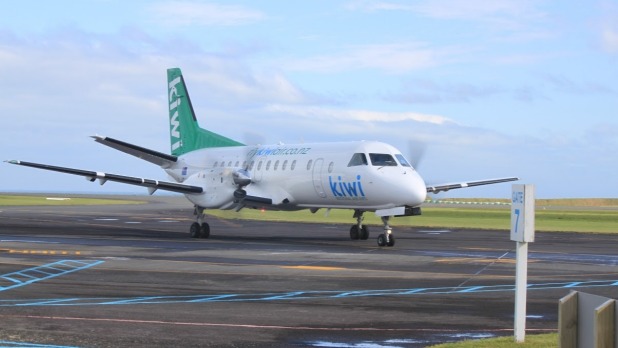 One of New Zealand's most established airlines has announced that it has purchased Kiwi Regional Airlines' Saab 340A aircraft and will absorb the aircraft and offer employment to the majority of Kiwi Regional Airlines full time staff and absorb them into its operations from the start of August this year.
Air Chathams has been in existence for over 30 years, and runs a 5-aircraft operation with scheduled services between the Chathams Islands and Auckland, Wellington and Christchurch as well as a regular scheduled service between Whakatane and Auckland.
One of New Zealand's most established airlines has announced that it has purchased Kiwi Regional Airlines' Saab 340A aircraft and will absorb the aircraft and offer employment to the majority of Kiwi Regional Airlines full time staff and absorb them into its operations from the start of August this year.
Air Chathams has been in existence for over 30 years, and runs a 5-aircraft operation with scheduled services between the Chathams Islands and Auckland, Wellington and Christchurch as well as a regular scheduled service between Whakatane and Auckland.
It has previously announced it would fill the gap left by Air New Zealand's withdrawal of services between Whanganui and Auckland, starting on 1st August 2016. It had planned to use an 18-seat Metroliner, but will now use Kiwi Regional's 34-seat Saab 340 on this route.
Kiwi Regional Airlines will continue to run its scheduled services until 30th July, and will then run the Whanganui to Auckland service for Air Chathams using Kiwi Regional's Air Operating Certificate until Air Chathams can move the aircraft onto its own AOC.
Kiwi Regional Airlines passengers booked on flights after midday on the 30th of July will receive full refunds, or be offered alternative travel on flights before that date. All of Kiwi Regional Airlines' charters flights with school groups in August and September will still operate.
Air Chathams CEO Craig Emeny said, "We are delighted to have bought Kiwi Regional Airlines' Saab 340."
"The aircraft is a respected aircraft type in New Zealand and has been very well maintained. Kiwi's pilots and engineers will make a welcome addition to the Air Chathams family."
Kiwi Regional Airlines CEO Ewan Wilson said Kiwi had "a choice to either expand by adding a second aircraft to our own fleet, guaranteeing reliability of service, and splitting the very high compliance costs; or be absorbed into a larger player."
"From my point of view I am pleased our aircraft and flight staff will become part of the Air Chathams operation. We have had a formal maintenance agreement with Air Chathams since the start, and this will be an extension of that relationship.
EWAN WILSON
CEO
Kiwi Regional Airlines
Qantas to add extra Queenstown flights over winter
 Qantas is boosting flights between Sydney and Queenstown this coming winter as skiers flock to the popular New Zealand tourist hotspot.
The airline plans to operate an additional 13 return flights over July and August, with 11 of those to run on selected weekdays and two scheduled for Saturday August 6th and 13th.
Qantas is boosting flights between Sydney and Queenstown this coming winter as skiers flock to the popular New Zealand tourist hotspot.
The airline plans to operate an additional 13 return flights over July and August, with 11 of those to run on selected weekdays and two scheduled for Saturday August 6th and 13th.
“Booking patterns suggest that more Australians are looking at a New Zealand ski break after what’s expected to be a strong start to the season this weekend,” Qantas said in a statement on Friday.
“It’s the latest example of Qantas taking a flexible approach to its fleet and network in order to meet growing demand for travel to short and medium-haul international destinations – following several earlier announcements of capacity increases on Asian and trans-Tasman routes.”
Qantas flies Sydney-Queenstown alongside its low-cost unit Jetstar. Virgin Australia and Air New Zealand are also on the route.
June 10, 2016 by
Emirates plans to boost capacity on the longest non-stop route in the world between Auckland and Dubai
Emirates plans to boost capacity on the longest non-stop route in the world between Auckland and Dubai by using a super jumbo A380 later this year.
The airline says it follows the achievement of high load factors on the Boeing 777-200LR aircraft operating the service since its introduction on March 1.
Emirates began regular services on the the 14,200km route using a smaller Boeing 777-200LR in March.
It did use a super jumbo on the inaugural flight as a one-off and said at the time it had plans to build to the higher capacity A380.
The double decker can seat 14 in first class, 76 in business class and 399 in economy class.
Emirates specially fitted out Boeing 777-200LR aircraft for the ultra-longhaul flights, carries up to 266 passengers in three classes.
Emirates president group services, Gary Chapman, said in March there was potential for the A380 to be used regularly on the non-stop route.
"As demand builds, and it's building very strongly, I can see a time when we have the A380 on it."
Emirates president group services, Gary Chapman, said in March there was potential for the A380 to be used regularly on the non-stop route.
"As demand builds, and it's building very strongly, I can see a time when we have the A380 on it."
Grant Bradley
Aviation, tourism and energy writer for the Business Herald
United Airlines - we've changed
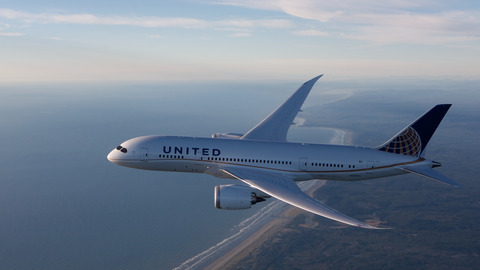 United Airlines, preparing to return flights into Auckland, says that its product and service has changed for good.
United Airlines, preparing to return flights into Auckland, says that its product and service has changed for good.
The airline is the world's biggest by the size of its network and will start flying from San Francisco to Auckland from July 1, in partnership with Air New Zealand.
The service will be three times a week initially and increase to daily from October using a Boeing 787 Dreamliner.
Julie Reid, director for Australia and New Zealand sales, said the airline was a "new United."
In the past, United along with other US carriers had been slow to upgrade planes and products and some crew had a reputation for being grumpy.
Reid said her airline was undergoing a transformation.
Two and half years ago United's Boeing 747s to Australia had no entertainment or drinks for economy passengers.
Dreamliners on the route had reinstated these features for economy class, all passengers were offered wi-fi access across the Pacific and the business class had full lie flat beds.
The partnership with Air New Zealand allowed United to be competitive on the route it flew between 1986 and 2003 and Reid said her airline was here for the long haul.
"It's the right partnership at the right time. Auckland was on the table before oil prices dropped as low as they have and we're not going to come back to city and chop and change our mind in the next six months. We've done our investment. Fuel has helped but I don't think it's a decider for Auckland."
United and Air New Zealand were in a revenue sharing agreement where they align on fares, jointly market and sell the route and have reciprocal lounge and frequent flyer schemes. A key feature of the arrangement was access for New Zealand passengers to United's extensive domestic and regional network.
Auckland was on the table before oil prices dropped as low as they have and we're not going to come back to city and chop and change our mind in the next six months.
United Airlines and United Express operate an average of nearly 5000 flights a day to 342 airports across six continents.
She said there were no plans to launch the United service to Auckland with slashed fares but they would be ``good value''.
"I think when people see fares under $1000 (return) they see a good deal."
Rival carrier American Airlines begins Los Angeles-Auckland services later this month in partnership with Qantas and launched that service with some $799 fares.
Grant Bradley
Aviation, tourism and energy writer for the Business Herald
Wednesday, 08 June 2016
Air NZ sells Virgin stake to China's Nanshan
 Air New Zealand, the country's national carrier, has sold a 19.98 per cent stake in Virgin Australia to Chinese company Nanshan Group, which owns Qingdao Airlines, and says it is considering options for its remaining 6 per cent holding in Australia's second-largest domestic airline.
Air New Zealand, the country's national carrier, has sold a 19.98 per cent stake in Virgin Australia to Chinese company Nanshan Group, which owns Qingdao Airlines, and says it is considering options for its remaining 6 per cent holding in Australia's second-largest domestic airline.
The Auckland-based carrier said it will sell the stake in Virgin Australia at A33c per share, a premium to Virgin's last traded price on the ASX of A28c. Last month, Virgin Australia issued new shares at A30c apiece to a unit of HNA Aviation Group, the largest private operator of airlines in China, giving it a 13 per cent stake, and HNA said it intends to increase its shareholding over time to 19.99 per cent.
Air NZ chief executive Christopher Luxon resigned abruptly from the Virgin board in March and the airline announced it was considering selling its 25.9 per cent stake in Virgin Australia and had hired First NZ Capital and Credit Suisse to advise on its options.
The Kiwi carrier has spent an estimated A$373 million building up and maintaining the Virgin stake since 2011 but faces a considerable loss on that investment.
Virgin's share price dropped early this month after brokerage Credit Suisse indicated it could require an A$1 billion equity raising, double previous expectations, to reduce debt to reasonable levels after it posted a profit warning.
"We believe Nanshan Group will be a very strong, positive and complementary shareholder for Virgin Australia," said Air NZ chairman Tony Carter.
"The sale will allow Air NZ to focus on its own growth opportunities, while still continuing its long-standing alliance with Virgin Australia on the transtasman network".
Matthew Goodson, Salt Funds Management managing director, said the market was expressing approval of the sale. "There's a sense of relief that Air NZ has managed to extricate themselves from most of their stake in Virgin at a decent price. There has been some concern that Air NZ might not be able to sell the stake, or sell, but at a distressed price," Goodson said.
"If you look at Virgin's balance sheet, it certainly does have a small amount of equity. I think this is a good deal for Air NZ to move on. That's the market reaction," he said.
"The key thing is now what Air NZ does with the money. They have plenty of imputation credits. Will they pay a special dividend?"
The Sydney Morning Herald has reported Air NZ is expected to use the sale proceeds to pay a special dividend to its shareholders, which include the Government with a 53 per cent stake.
UBS said it believed net proceeds from the shareholding sale should be around 2c a share.
After a Virgin Australia capital structure review, Air NZ should also get its A$131 million shareholder loan to the Australian airline repaid.
"After both events we believe [Air NZ] will most likely return net proceeds from the [Virgin Australia] shareholding sale to its shareholders via special dividend," UBS said. "While exact timing is difficult to judge, we expect this to occur before the end of August."
However, Deutsche Bank analysts said with Air NZ still having $2.3 billion of new aircraft expenditure to fund through to 2019, they would not be surprised to see the board adopt a cautious approach to capital management for now.
The divestment would reduce Air NZ's debt gearing levels by around 4 basis points, they said. Reported gearing was 53.8 per cent in the first quarter of 2016, which is near the top of its 45-55 per cent target range with capital expenditure skewed to the first half.
Air NZ said it had "no comment" to make on a special dividend payment.
The Deutsche Bank analysts said accounting-wise, they expected material mark-to-market losses on disposal of Air NZ's full stake, which had a carrying value on its books of around $400 million in the first quarter of this year.
Air NZ and Virgin formalised an alliance in 2010 with codesharing agreements on transtasman and connecting flights and reciprocal frequent flyer and lounge access deals. The tie-up was first mooted in response to Qantas' two-airline strategy where its low-fare Jetstar unit operates domestically in NZ and links to longer-haul flights on its parent.
Nanshan is a large, privately-owned Chinese conglomerate with interests across a diverse range of industries including its own emerging airline, Qingdao Airlines, launched in April 2014.
The sale is subject to and will take place after receipt of Nanshan Group regulatory approvals from Chinese authorities.
Keeping the stake below 20 per cent prevents the triggering of regulatory approvals required under Australian law.
Air NZ shares closed up 5c yesterday at $2.22.
NZ Herald
Friday, 10 June 2016
Month of discounts from new kids on the tarmac
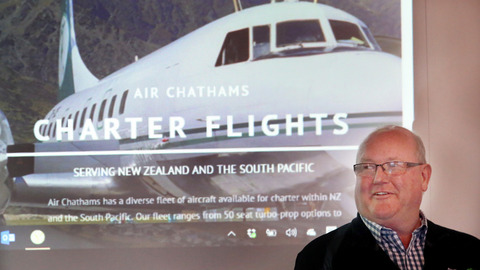 Whanganui's new air service has announced discounted fares throughout the first month of its operation in a bid to attract passengers.
Whanganui's new air service has announced discounted fares throughout the first month of its operation in a bid to attract passengers.
Air Chathams general manager Duane Emeny broke the news in the city on Wednesday to a Whanganui business audience.
Mr Emeny said no ticket prices would be more than $200. Given Air Chathams' refundable premium ticket for a one-way Whanganui-Auckland trip is $344, it represents a significant saving.
And he said there were other options frequent flyers could buy into once the privately-owned airline takes over the route from Air New Zealand on August 1.
The multi-pass ticket virtually cuts fare prices in half and again was fully refundable and flexible. Someone buying a 10 ticket block would get the fully refundable tickets for $170.
"And when your ticket balance gets a bit low you can simply top it up online through our website."
He said the company was talking with Air New Zealand about keeping people involved in that national carrier's frequent flyer services, especially the Koru Club membership. And the freight service side of the business was something they would also be pushing. There will be an express freight service charging $2 per kg with a minimum of 15kg.
He said Air New Zealand's decisions to quit the Whanganui route was a commercial one and no doubt made on a reasonable basis.
"But for a company like ours this offers a very big opportunity. We had a big operation in
Tonga for five years but the political landscape changed there and the decision was made to come back to consolidate in NZ.
"We effectively retrenched in Auckland and then started to grow. We were investigating a number of routes and then when Air New Zealand made its decision about Westport,
Kaitaia and Whakatane, we put in bids to service all three.
"We were as surprised as anyone when the decision was made about Whanganui. It's a larger region and has had an air service for so long. So with that background we see this area as a great opportunity," he said.
Mr Emeny said Air Chathams was "really comfortable" with the market they saw here.
"It was made easier by what's happened, as far as our service through Whakatane has shown us. Rotorua and Tauranga are close by, just as Palmerston North is not far away from you. So Whanganui has the same challenges.
"But we've been able to go in there and say we're an airline keen to support the community and develop a service around that. It started like that for us in the Chatham Islands a long time ago, and it worked for us."
He said they were looking forward to working with Whanganui, "understanding what you need". "Whanganui's been named one of the country's top 10 tourist destinations, so there's definitely potential here."
He said the schedule from August 1 mirrored the current Air New Zealand service for obvious reasons.
"But the thing is we're a small airline, so change is not hard for us to make to suit what your market needs," Mr Emeny said
And there's a chance the airline will decorate the Whanganui plane along similar lines to that flying to Whakatane.
"It was a joint venture with their district council. When we first started that run the aircraft was just painted white and some people said it looked a bit boring.
"We had regular meetings with the mayor and council and I floated the idea of a flying billboard. What it does is sell Whakatane as a beautiful destination, and it's flying in and out of Auckland, the country's biggest airport," he said.
"Once we meet everyone and get to know who to talk to here, we'll get involved in the same thing here. I think it would be neat. There are some key features of Whanganui that we could display on that plane."
FLIGHT OPTIONS: Air Chathams chief executive Craig Emeny said the company was looking forward to being involved with the Whanganui market.
Publication WAC
Friday, 10 June 2016
Jetstar free birthday flights offer
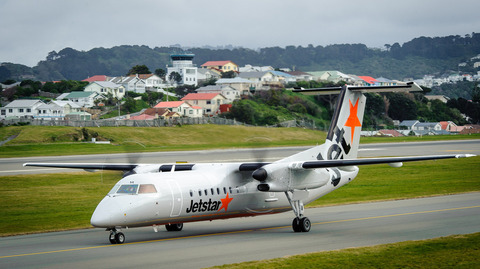 NN
NN
Jetstar is celebrating seven years of domestic operations by offering passengers a free return leg ticket for flights to a range of domestic and trans-Tasman destinations.
The sale started this morning for travel periods between October-December and February-March 2017.
Jetstar's head of New Zealand Grant Kerr said seven years was a major milestone for the company.
"It's been a very big year for Jetstar's New Zealand operations with significant growth," he said. "We're delighted to be celebrating by offering thousands of more reasons to travel with us."
Its birthday sale fares start from $39 return. The airline does not say how many of the free flights are being offered as part of the promotion.
NZ Herald
Wednesday, 08 June 2016
New player ups the ante on flights to Hong Kong
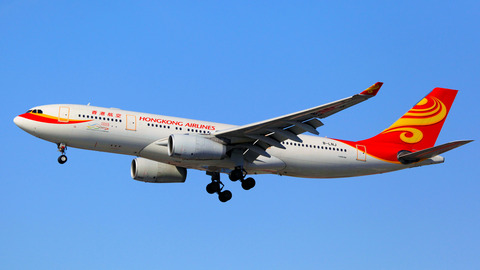
Auckland-Hong Kong routes are shaping as a battleground as Hong Kong Airlines enters the market just as incumbent Cathay Pacific rolls out a brand new weapon - the latest long-haul airliner.
Add to the mix Air New Zealand's daily flights using newly refurbished Boeing 777s and there's a big challenge for airline revenue teams but big opportunities for bargain hunters.
Hong Kong Airlines will start flying on November 10 and launched with business-class fares of $2204, less than half that charged by its rivals.
Cathay Pacific, which has a revenue-sharing deal with Air New Zealand, has cut its return fares to China through its Hong Kong base to $1019.
Cathay's director of corporate affairs James Tong said the entry of a new player would help stimulate the market.
"In a sense it's a good sign - it means the whole market is building up and expanding," Tong said.
"From a competitive point of view we welcome another player - there are now three airlines promoting a destination."
Between the three carriers there would be up to four return flights a day between Hong Kong and Auckland and Tong said there was scope for his airline to add even more.
"The Auckland route is doing very well. We are very optimistic about this market."
Cathay will use new Airbus A350XWB planes on the route from October 31.
The aircraft is up to 25 per cent more efficient than equivalent size, older planes. The twin-engine plane will replace four-engine A340s the airline uses.
Leslie Lu, general manager of product for Cathay Pacific, said flying inefficient older planes made it difficult to compete.
Passengers were demanding better seats and entertainment, he said.
Air New Zealand's chief sales and commercial officer Cam Wallace said new planes do have an impact on a market.
When Air New Zealand introduced the 787 Dreamliner to the Shanghai route it was turned around immediately. "The airline economics improved with more efficient aircraft and it appealed to the high-end leisure market and the corporate market."
Around the margins there were also aircraft enthusiasts who would target certain planes to fly on.
Like Tong, he said the competition would stimulate the market and help push fares down.
"They're coming in with quite significant increases in capacity and prices will reflect this," Wallace said.
Hong Kong Airlines would mainly carry Chinese tourists to New Zealand who are flooding here in growing numbers for their holidays.
There had been a steady increase year on year in the number of Hong Kong and China travellers visiting New Zealand.
According to figures to March, the total number of visitors from Hong Kong and China was up 19.1 per cent and 27.8 per cent respectively.
About 380,000 Chinese come to New Zealand and within two years they are forecast to be the biggest spenders, ahead of the million-plus Australians who come here each year.
Hong Kong Airlines was established in 2006 and is a full-service carrier with 30 destinations across the Asia-Pacific region and has a young fleet of 30 Airbus aircraft with an average age of around 3.5 years.
Auckland Airport estimates that Hong Kong Airlines' new service will add 177,000 seats to the Hong Kong to Auckland route every year and will provide a $137 million boost to the New Zealand tourism industry.
By Grant Bradley
NZ Herald
Aviation, tourism and energy writer for the Business Herald
Air NZ flies direct to Vietnam
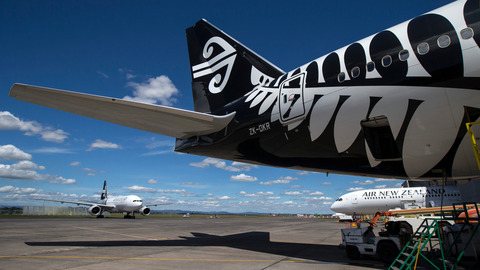 Air New Zealand has completed its first direct flight to Vietnam.
Air New Zealand has completed its first direct flight to Vietnam.
The plane left Auckland yesterday afternoon, and arrived in Ho Chi Min City at 8pm local time, just over 12 hours later.
Economic Development Minister Steven Joyce was on board with Vietnam's Ambassador to New Zealand, Viet Dung Nguyen.
The Vietnam route extends the airline's total number of international destinations to 30.
NZ Herald
Sunday, 05 June 2016
New flights are a response to growth
 Air New Zealand has announced it will operate up to 10 new weekly flights between Auckland and Tauranga by the end of the year. The airline is also reinstating the 6.05 am service from Tauranga to Christchurch.
Air New Zealand has announced it will operate up to 10 new weekly flights between Auckland and Tauranga by the end of the year. The airline is also reinstating the 6.05 am service from Tauranga to Christchurch.
Air New Zealand described the region as a "significant growth market" and said it would operate up to 80,000 additional seats to and from Tauranga in 2017.
Tourism BOP chief executive Kristin Dunne said she was thrilled with the news.
"Any increase in access to the city and the region is fantastic," she said. "This is very positive from our perspective. Air NZ is absolutely seeing the value in our region."
Tauranga Airport, Tauranga City Council and Tourism Bay of Plenty had regular meetings with the airline and were always discussing how to improve services, said Ms Dunne.
JetStar decided last year not to add Tauranga to its new regional offering. But Ms Dunne said she did not think that had a major bearing on Air New Zealand's latest announcement.
"This is a demonstration of the fact they are very positive about the growth in the region and how significant it is for them."
Tauranga Airport manager Ray Dumble said the decision was good news, especially for the business community. Details of the timing of the new flights were not yet available, but they would include adding an extra flight before 9am, bringing the total to two, and were also expected to fill a couple of holes in the afternoon schedule.
"The Auckland flights, in particular, will give people a real choice as they can now do either a full or a half day up there," he said. "That's a biggie. It's becoming a bus service and that's what the business community wants."
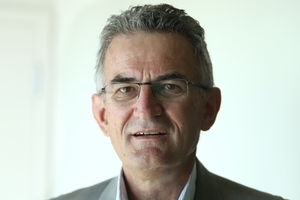
Tauranga Chamber of Commerce chief executive Stan Gregec said it was welcome news for the business community. "Especially the reinstatement of the early Christchurch flight. We're pleased to see Air New Zealand responding to demand and adding more options for the travelling public and business people," he said.
"Keeping fares competitive and schedules convenient for business travellers should translate into benefits for everyone."
In its announcement, which includes changes to other regional services, Air New Zealand said it was making the adjustments as a result of feedback on the revised domestic schedule it issued earlier this year.
"The new schedules have been generally well received by customers, although a couple of communities raised concerns around new peak business flight timings," said general manager networks Richard Thomson.
"A strength of our business is the emphasis we place on consultation and responding to customer feedback. While the response to the new schedule was very positive we have listened carefully to stakeholder and customer feedback and we're pleased to have been able to overcome some key challenges identified in the following communities."
More flights:
* Air New Zealand is expected to launch its new Tauranga schedule as of October 31, 2016.
Thursday, 02 June 2016
NZ Herald
By David Porter
Sounds Air could fill gap left by Air New Zealand after national carriers drops Blenheim-Christchurch flights
 Marlborough airline Sounds Air could pick up the slack after the national carrier announced it was ending flights between Blenheim and Christchurch.
Marlborough airline Sounds Air could pick up the slack after the national carrier announced it was ending flights between Blenheim and Christchurch.
Air New Zealand announced on Monday it was pulling out of its Blenheim-Christchurch and Auckland-Whanganui routes because of a lack of demand.
Sounds Air managing director Andrew Crawford said the privately-owned airline was exploring taking up the Blenheim-Christchurch route, which he said would operate at least twice daily.
The airline, which had a fleet of Cessna Caravans and Pilatus PC12s, had taken over other regional routes abandoned by Air New Zealand, including those between Westport and Taupo to Wellington.
Marlborough Mayor Alistair Sowman said he was disappointed and frustrated by the national carrier's decision.
"Now that Air New Zealand has left this vacuum I would anticipate our successful local operator Sounds Air might see the opportunity here so let's wait and see what happens," he said.
An Air New Zealand spokesperson said when the direct service ended on July 31, the quickest flight time via Wellington would be 90 minutes and the cheapest fare would remain the same at $59.
The reason the airline pulled the routes was because of a lack of demand, however it had been criticised for not waiting longer to see if demand would pick up on its larger planes.
The Blenheim-Christchurch route had been serviced by Beechcraft 1900D aircraft, however these were replaced by 50-seater Bombardier Q300s in early May.
Marlborough Airport chief executive Dean Heiford said he was disappointed the carrier had made the announcement so soon after switching to the larger planes.
"I'm disappointed they didn't give us a bit more of a chance to build capacity, but I understand it's an economic decision," he said.
The spokeswoman said the 50-seat services had been available to book for more than a year and the airline had dropped lead-in fare prices by 40 per cent to reflect the increased capacity.
But there had only been an increase of around two to three people per day, she said.
"Forward bookings on this route are not strong enough to sustain a viable service."
Staff at PC Media, in Blenheim, used the service at least once a week for business.
Technical director Lee Harper said the airline had not waited long enough to see if demand would pick up.
"It was three weeks in the middle of winter with barely any promotion," he said.
The times for business people travelling from Blenheim were good, but hardly anyone used the 6.10am departure time from Christchurch, he said.
It would be too difficult to get from Blenheim to Christchurch via Wellington by 9am, so Harper said staff would have to drive and stay overnight in the city.
Marlborough Tour Company managing director Chris Godsiff said the flight schedule had contributed to the lack of demand which caused the service to close.
"The flights that Air New Zealand put on weren't particularly user-friendly, they were pretty cranky times," he said.
International visitors coming to Blenheim might be put off by having to get two flights, he said.
"It's got to be a deterrent, because the last thing you want to do when you get to New Zealand is get another two flights, one is bad enough."
Sowman said the timing of the announcement was frustrating because the top of the South was expecting more Chinese visitors.
Destination Marlborough general manager Tracy Johnston said the news was disappointing but around 80 per cent of international visitors arrived in New Zealand through Auckland Airport.
Blenheim had good connectivity with Auckland, so she did not think cutting the Blenheim-Christchurch link would impact the number of overseas tourists coming to Marlborough.
- The Marlborough Express
OLIVER LEWIS
Last updated 17:21, May 31 2016


